 My mom is a professional dressmaker. As a child, I thought her office was a wondrous and tempting place, a treasure trove of dress-up opportunities. My mom enforced a strict no-touching rule, of course. While the garments and her tools were off limits, I was allowed access to her scrap closet. Here she kept giant bags of leftover bits of material and trimmings. I’d often sift through the fabrics, marveling at the different textures and colors. I might find strips of soft leather, squares of vibrantly patterned silk, or any kind of lace you could imagine. My favorite discovery was a colorful beaded textile for an Indian sari. I loved the subtle sparkle of the beads and the intricacy of the pattern. These childhood memories were the inspiration for this “beaded” autumn leaf cookie. Extra coarse sanding sugar mimics the beads, providing just the right texture, transparency, and shine.
My mom is a professional dressmaker. As a child, I thought her office was a wondrous and tempting place, a treasure trove of dress-up opportunities. My mom enforced a strict no-touching rule, of course. While the garments and her tools were off limits, I was allowed access to her scrap closet. Here she kept giant bags of leftover bits of material and trimmings. I’d often sift through the fabrics, marveling at the different textures and colors. I might find strips of soft leather, squares of vibrantly patterned silk, or any kind of lace you could imagine. My favorite discovery was a colorful beaded textile for an Indian sari. I loved the subtle sparkle of the beads and the intricacy of the pattern. These childhood memories were the inspiration for this “beaded” autumn leaf cookie. Extra coarse sanding sugar mimics the beads, providing just the right texture, transparency, and shine.
Supplies:
- Design template (See "Files" in "Attachments" at the end of this post.)
- 1 (5 x 5-in/12.7 x 12.7-cm) square cookie
- Royal icing (I used AmeriColor gel paste to color the icing):
- Stiff-consistency dark brown (3 parts Chocolate Brown/1 part Super Black)
- Flooding-consistency dark brown (3 parts Chocolate Brown/1 part Super Black)
- Flooding-consistency red (3 parts Tulip Red/1 part Warm Brown)
- Flooding-consistency green (2 parts Leaf Green/2 parts Forest Green/1 part Gold)
- Flooding-consistency orange (2 parts Gold/2 parts Orange/1 part Warm Brown)
- Flooding-consistency yellow (1 part Gold/1 part Lemon Yellow)
- Flooding-consistency blue (Electric Blue)
- Tips:
- PME #0, 3 (or equivalents)
- 3 1/2 cups extra coarse sanding sugar, divided
- AmeriColor gel paste to color sanding sugar (use 1/2 cup sanding sugar for each color):
- Light brown (for veins): 2 drops Warm Brown
- Dark brown: 3 drops Chocolate Brown + 1 drop Super Black
- Red: 2 drops Tulip Red + 1 drop Warm Brown
- Green: 1 drop Leaf Green + 1 drop Forest Green
- Orange: 2 drops Orange + 1 drop Gold + 1 drop Warm Brown
- Yellow: 1 drop Gold + 1 drop Lemon Yellow
- Blue: 2 drops Electric Blue
- Sandwich-sized resealable bags
- Parchment paper
- Rimmed sheet pans
- Corn syrup
- Several small and medium-sized flat paint brushes
- Culinary tweezers
Step 1: Pipe outline
a. Transfer the design template onto the cookie using a projector, the paper transfer method, or another method of your choice. (Again, the design template can be found in "Files" at the end of this post.) Using stiff-consistency dark brown royal icing and a PME #0 tip (or equivalent), pipe the outline of the leaf, including the veins and internal lines that will separate the different colors.
Step 2: Flood outlined areas
Reference the paint-by-numbers-style diagram below to determine which section should be flooded with which color of icing.
a. Use flooding-consistency dark brown royal icing and a PME #0 tip (or equivalent) to fill the sections marked with a #1.
b. Use flooding-consistency red royal icing and a PME #0 tip (or equivalent) to fill the sections marked with a #2.
c. Use flooding-consistency green royal icing and a PME #0 tip (or equivalent) to fill the sections marked with a #3.
d. Use flooding-consistency orange royal icing and a PME #0 tip (or equivalent) to fill the sections marked with a #4.
e. Use flooding-consistency yellow royal icing and a PME #0 tip (or equivalent) to fill the sections marked with a #5.
f. Use flooding-consistency blue royal icing and a PME #3 tip (or equivalent) to fill the section marked with a #6.
Note: This cookie is very forgiving! The flooded layer simply defines and intensifies the color of the sugar that will be placed on top; it does not need to be perfect. Don’t worry about any craters, air bubbles, or other imperfections.
Step 3: Color sanding sugar
a. While the icing is drying, color your sanding sugar. For each color, place 1/2 cup of extra course sanding sugar in a sandwich-sized resealable bag.
b. Add the gel paste coloring (refer to the ingredients list for the color formulas).
c. Seal the bag, and gently massage the sugar until the gel paste is distributed.
d. Empty the sugar onto a parchment-lined sheet pan, spreading it into a thin layer.
e. Allow the sugar to dry for an hour before breaking up any clumps. Let the sugar continue to dry uncovered until the icing on the cookie has hardened.
Note: You will have far more colored sanding sugar than you actually need for this cookie. When I tried using smaller quantities of sugar, they quickly became oversaturated with dye. The remaining sugar can be kept in air-tight containers for future projects.
Step 4: Apply sanding sugar
a. Paint the veins of the leaf with corn syrup using a small, flat paint brush.
b. Sprinkle some of the light brown sanding sugar on top of the sticky areas. Gently pat down the sugar with your fingertips.
c. Holding the cookie over a rimmed sheet pan, gently angle the cookie to allow the loose sugar to fall off into the sheet pan. (Excess sugar can be recovered from the sheet pan for future use too.)
d. Use a dry paint brush to remove any remaining loose sugar from the cookie.
e. Next, paint the green sections with corn syrup. Apply the green sugar more sparingly using culinary tweezers.
f. Continue painting sections of the leaf and then applying the corresponding color of sugar. Use the tweezers to remove any errant crystals that sneak into the wrong section.
g. Finally, use a medium-sized, flat paint brush to paint corn syrup on one large section of the blue background. (It’s best to apply the sugar to the large background area in sections, so that the corn syrup doesn’t dry while you are still working.) Apply the blue sugar to the sticky area before repeating with the other sections.
Finished!
I don’t think I’ve ever used sprinkles on my cookies before, but I’m a convert. The subtle variations in the amount of dye on each crystal of sugar create an eye-catching effect. These cookies were so much fun to make, and I’m in love with the mosaic-like look of the coarse sugar. I hope you all give this “beaded” concept a try!
Source:
- Dolce Sentire, Handpainted Rose Cookie: A Tutorial (for paper transfer technique)


Samantha Yacovetta began cookie decorating in 2013. While working at a local bakery, Samantha became captivated by cookie art when a customer requested princess-themed cookies. Attracted initially to the precision of cookie decorating, Samantha soon found that the limitless design opportunities turned it into her artistic passion. Samantha began regularly stocking the bakery case with decorated cookies and for several years sold cookies through her own company, Aproned Artist, a cottage food operation. Having retired from the business life, Samantha now enjoys making cookies just for fun from her home in San Jose, California, USA. To learn more about Samantha, please check out her Cookie Connection portfolio, her Facebook page, and her past Every Little Detail tutorials here.
Photo and cookie credits: Samantha Yacovetta
Note: Every Little Detail with Aproned Artist is a monthly Cookie Connection blog feature written by Samantha Yacovetta focused on the special little details that make big statements in cookie design. This article expresses the views of the author, and not necessarily those of this site, its owners, its administrators, or its employees. To read all of Samantha's past Every Little Detail tutorials, click here. And to see all of Cookie Connection's tutorials, click here.


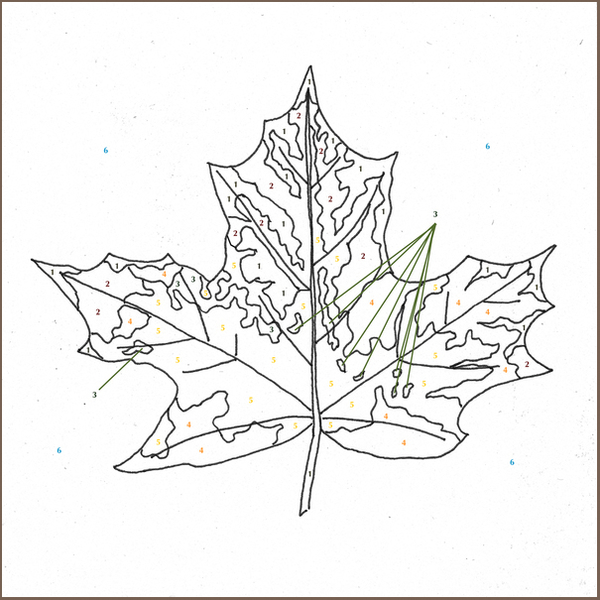


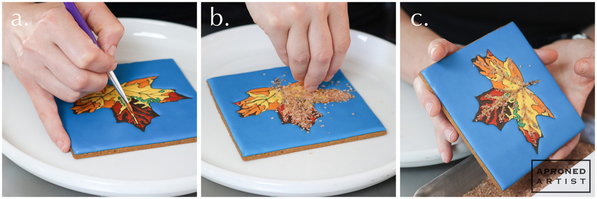
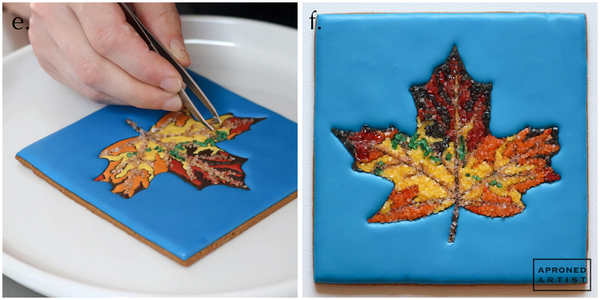
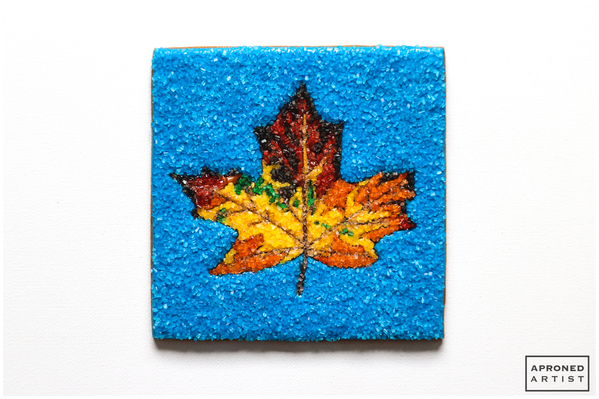
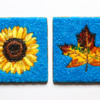
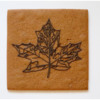
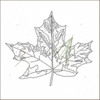

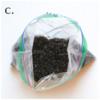
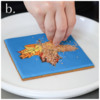
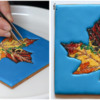
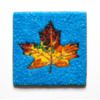
Comments (20)